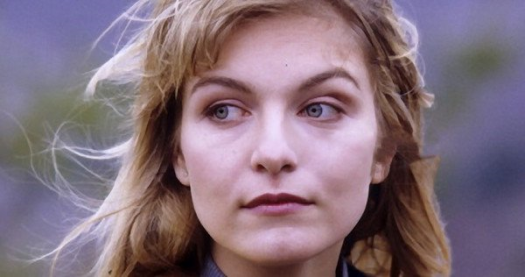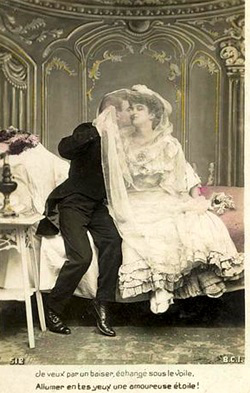The following is a guest article from Paul Casey, who previously wrote Twin Peaks – The Mystery as Holy. Hope you enjoy!
“Shadow. Take me down. Shadow. Take me down with you. For the last time. For the last time. For the last time.”
Twin Peaks is difficult to categorize, especially with Fire Walk With Me and The Return. The original is easier to digest. Its descent into a surreal, terrifying and beautiful world is slow, giving the viewer a lot of time to prepare. The original’s use of soap opera style story-lines, including a parody of soap operas called Invitation To Love with a show within a show, means that for as crazy as things get, there is a grounding in a familiar reality. This is one reason why the original Twin Peaks is the gateway for many people to get into David Lynch. While Twin Peaks may share similarities with Soap Operas, it can hardly be called one, given the intensely original and unique approach to storytelling, as well as its sinister and otherworldly elements. Nobody ever saw anything like BOB in a Soap Opera before, and for good reason: he scares the shit out of the audience.
 Bob, considered by many to be television’s all time scariest villain.
Bob, considered by many to be television’s all time scariest villain.
Twin Peaks also has many elements of other genres, including a strong sense of Horror tropes as well as how to subvert them and spin them out in a unique manner. It has a strong mythology and ability to depart from reality based storytelling, that recalls in some parts The Twilight Zone and even something like Star Trek, when that legendary show was taking risks. Most of all though, I feel that at its heart, Twin Peaks has the most in common with Noir. For its dark and beautiful heart, for its ruminations on good and evil and for the eternal struggle that a man or woman has within themselves for purity of their own soul. A man who is at war with himself, over the conflict between the light and the dark, is the central obsession of Noir, and Twin Peaks has that in large quantities.
Noir is something that I have loved for many years. It is a genre that is concerned with the evil that good women and men can be pushed into, given the right circumstances. As John Huston tells Jack Nicholson in the great Neo-Noir Chinatown: “See Mr. Gittes most people never have to face the fact that at the right time and the right place, they’re capable of anything.” Twin Peaks is a story about how a seemingly idyllic town hides great evil; evil that could destroy the world, if given half a chance. In this sense, Twin Peaks echoes Blue Velvet, and in many ways is the follow up to that, equally Noir, picture. Noir is fated doom. It is the descent of good men into worlds of evil, and in doing so, being changed forever. When Coop attempted to do battle with the evil that existed behind the curtains, he split himself in two. Coop, a good man, was trapped while his bad side was allowed to run riot and cause untold damage to the world at large.
Something I have thought about recently is how Mr C did not simply have the appearance of Coop, but that he was Coop, except the side of him that had the capacity to commit evil deeds. If you look at some of the great Noirs, Twin Peaks is in good company with this examination of the internal moral battle that happens within us all. I am thinking of In a Lonely Place, starring Humphrey Bogart, and Alfred Hitchcock’s Strangers on a Train. These two movies make the argument that if you are guilty in your heart, you are guilty for real. Even though you may not do it, you wanted it. That evil is in you. Buried deep, but there all the same. The doppelgangers of Twin Peaks are the physical manifestations of this element of Noir: the struggle to embrace our good intentions and to reject the ease and pleasure that comes from doing ill.
 Mr. C, the side of Agent Cooper with the capacity to be evil.
Mr. C, the side of Agent Cooper with the capacity to be evil.
Noir has traditionally featured women that are the catalyst for change, sometimes for good but often for bad. Laura Palmer is a classic Noir character. Laura recalls the real life murder of Elizabeth Short in L.A. In 1947, particularly the fictionalized account as written by James Ellroy. While I can’t say with certainty that this unsolved murder influenced David Lynch and Mark Frost, it still has a similarly resonant impact, with the obsession of Special Agent Dale Cooper bringing to mind Ellroy’s characters Bucky Bleichert and Lee Blanchard whose lives were transformed by Elizabeth Short’s tragic death. Laura Palmer is, much like Short, a woman whose connection to the dark side of life would define in many ways what Noir is all about. Some people have questioned whether Laura wanted to die, so full of pain and tragedy was her life. Some have drawn attention to her capacity for duplicity and seemingly willing entry into relationships with men that were anything but healthy. Look at the scenes in Fire Walk With Me where her final hours are documented and see a sublime bit of Noir character study. Laura was full of secrets, and seduced by the fire that would ultimately kill her. She is one of the great femme fatales, not just for her capacity to seduce any man she wanted, but also for how she led good men to come face to face with great evil and danger. She is the reason why Coop ended up in the Black Lodge, and why his doppelganger wreaked such havoc. Her impact was not exclusively negative however, as the light that defined her good heart, and as The Return suggested, she was the last great hope for good to finally defeat evil.
Otto Penzler, the co-editor of The Best American Noir of the Century with James Ellroy, suggests that Noir is about losers, not private detectives. He holds that Noir must end in doom for all involved. This is a rather simplistic way of defining the genre. Yes, it’s true that Noir is concerned with stories that end in bad situations, but there are many examples of stories that express a certain kind of hope, even while the characters are surrounded by danger and destruction. Think of the ending to The Black Dahlia, as Noir as any book in history and see a beacon of hope in among all of the death and terror. Noir is about examining ourselves in order to face up to our shadow side, and look it squarely in the eyes, in order to become better human beings. This is Twin Peaks through and through. Laura Palmer, who has been immersed in a world of rape and torture, is the last hope for all of us, because she has looked deep within herself and found the beauty and innocence hidden under all of the pain. This is why Laura is the one. She has died for our sins, and in doing so displays a selfless love that lights our way in the darkness. Noir is not then, just about people who lose or people who submit to the weakness in their character, but also intent on raising us above the shit and allowing us a path to a better life, full of love and respect for one another.
 Laura has always been the one.
Laura has always been the one.
Twin Peaks: The Return is even more Noir than either the original series or Fire Walk With Me. Mr C is one of the great Noir villains in recent years, up there with Dudley Smith in James Ellroy’s L.A. Quartet, and indeed Frank Booth in Blue Velvet. He also reminds me of Casey Affleck’s character in film adaptation of Jim Thompson’s The Killer Inside Me, in the purity of his evil, as well as his essential cowardice and hatred of women. This is something that was criticized when The Return was aired. David Lynch, some critics said, hated women. Look at the proof, they cried: look at how many women are hurt in his show. Well, leaving aside the fact that David Lynch’s work is full of complex, brilliantly observed performances from women – including the single greatest performance by a woman, and possibly by anyone with Laura Dern’s role in INLAND EMPIRE – and simply limiting ourselves to the purpose of these scenes in the show, we see an entirely different purpose. David Lynch sees women as being a light in a dark place. They represent the best in us as people, for the pain that they suffer in a misogynistic world and the bravery that it takes to stand up and be counted, and as a result the evil that Lynch sees in the world is intent on snuffing out that light.
 Laura Dern in David Lynch’s Inland Empire.
Laura Dern in David Lynch’s Inland Empire.
Crooked police officers and FBI Special Agents are a staple of Noir – in spite of Penzler’s reductive definition – and it is appropriate that the central bad guy in The Return possesses the same investigative know how as our Coop, but pushed through an evil soul. The Return’s ability to combine a Noir examination of the world, and the souls of people who inhabit that world, with a keen eye for Supernatural Horror brings the viewer to a place that very few works of art have accomplished. Just look Mr C in his black eyes, and see a pure definition of Noir: the evil that exists within us all, embodied in one man. In order for us to become better human beings, we must face this evil and not back down. The Blue Rose Taskforce is also thoroughly Noir in its shape, expressing the last few good women and men who are willing to stand up to the evil that threatens to devour all. A shout out to Robert Forster as Sheriff Frank Truman, who is as Noir as Robert Mitchum and Humphrey Bogart. Here he brings that Noir sensibility to the world of Twin Peaks, recalling his work in Quentin Tarantino’s Jackie Brown and Breaking Bad. He is one of the last decent men in a corrupt and terrifying world, standing up to evil. This is another way that Otto Penzler’s definition falters: Noir is about human weakness it is true, but that doesn’t mean that everyone in it has to be evil. We all have weaknesses, but it is how we deal with them that defines us.
An interesting aspect of Twin Peaks: The Return, in terms of Noir connections, is the character of Dougie Coop. Where as Mr C is all of the evil and perversion that exists within us all, personified in a pure form, Dougie Coop is all of the good. Where as Mr C causes devastation and pain everywhere he goes, Dougie Coop causes joy and happiness. If Noir is an examination of what makes us who we are, particularly those fatal flaws that define us, then The Return is as Noir as any of the greats: Sunset Boulevard, – one of David Lynch’s favourite movies, and the source of the name Gordon Cole – In a Lonely Place, After Dark, My Sweet, The Long Goodbye and Chinatown. When Coop is made whole again, he must come to terms with the fact that it was something inside of him that created Mr C. Mr C will always be with him, and it is his duty to make sure that it never again inflicts pain on others. The Return depicts an internal moral battle within a man, made external and physical. In this way, The Return is a pure expression of Noir, and while not having some of the stylistic elements of the genre, does indeed lead us to a deep understanding of our own moral frailties, the key defining quality in Noir.
Twin Peaks and Noir go hand in hand. Both are concerned with the weaknesses that define us, as well as the ways that we can overcome these weaknesses and become better, more compassionate human beings. Through the central examination of the two sides of Dale Cooper, as well as the life and death of Laura Palmer, Twin Peaks packs heavy Noir credentials. Of course, it is not simply Noir, it is also Supernatural Horror, and Soap Opera with a big dose of surrealist mythology. I feel though that it is through its nature as a work of Noir that we are best able to appreciate and understand the work, which is surely the greatest in the history of the medium.
Help us keep the conversation alive! We publish new content daily that can easily be found by following us on Twitter @25YLSite, joining our Facebook group or becoming an email subscriber here on the site. Thank you as always for your support of 25YL! Share this:



![Loving Day: A Novel by [Johnson, Mat]](/ai/067/426/67426.jpg)
